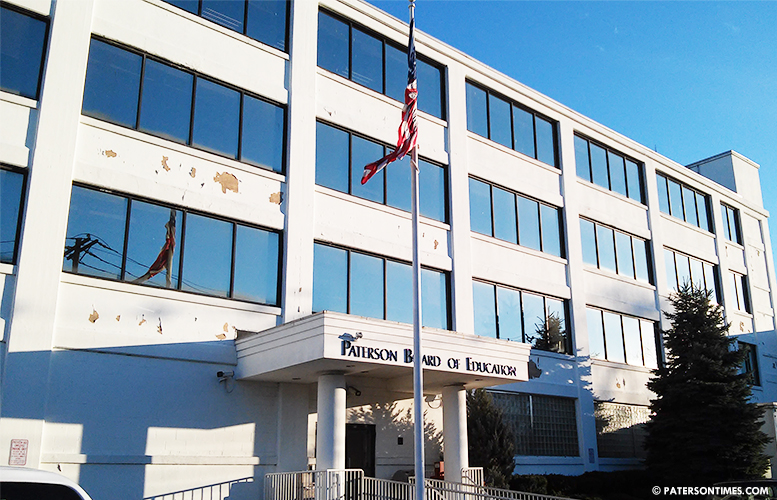The city’s school district is scrambling to address skyrocketing prescription health benefit costs which have been projected to be $30 million this school year from $19.7 million the previous, according to the district’s consultant.
The $10 million projected spike is largely due to increases in compound medication costs, according to John Lajewski, district’s health benefits consultant from Parsippany-based Conner Strong & Buckelew.
Lajewski also attributed the escalating cost to price inflation of brand name medications and utilization of expensive specialty drugs that treat life threatening conditions like cancer, anemia, and so forth.
Compound medication costs went from $918,000 in July 2013-June 2014 to $3 million in July 2014-June 2015, according to the consultant. In the first four months of this fiscal year compound drug claims have exceeded last year’s amount. $3.3 million in compound drug claims have been paid out from July 2015-October 2015, according to the consultant.
By June 2016 compound drug claims are projected to cost $13.7 million, according to the consultant.
“People are using more prescriptions,” said Lajewski. He said historically inexpensive compound drugs have experienced price increases due to a 2012 change in industry standards.
He suggested the district utilize Express Scripts’ compound management program to rein in rising cost by screening elements in compounds and excluding expensive ingredients. Enrolling into the compound management program will not cost anything to the district, said Lajewski.
The district’s self-insured prescription drug plan is managed by Express Scripts. The district has 9,437 individuals enrolled, including spouses and children of employees, into its prescription drug plan. Of those 250 have been incurring 95-percent of the compound drug spending, according to the consultant.
“You have some workable solutions to this?” asked school board member Errol Kerr.
Containing the cost of compound drugs also includes a variety of screening mechanism like deploying an extra layer of authorization for prescription drugs, limiting maximum amount of one medication an individual may receive over a period of time, ensuring FDA approved dosing regimen, and barring refills until 75-percent of the previous fill is exhausted (30-day supply cannot be refilled until after 23 days has passed), according to the consulting company.
The district’s prescription drug plan has been steadily increasing by roughly a million dollars a year until July 2014-June 2015 when claims jumped to $19.7 million, a $4.35 million increase from July 2013-June 2014, when claims stood at $15.9 million, according to the consultant’s data.
Although the cost has been rapidly increasing, the district, after moving from a fully-insured to a self-insured program in 2011, purchased a separate aggregate stop-loss policy from Express Scripts in 2012, which has prevented budget shocks.
From July 2012-June 2013 the district paid $841,008 for its stop-loss policy saving $5.6 million.
“If the district did not have the wherewithal to purchase that stop-loss policy that cost would have been $4.3 million more than they actually paid out,” said Lajewski. He cited last year’s $19.7 million prescription drug cost for which the district paid $15.34 million while the stop-loss policy picked up the difference of $4.34 million.
The district also went over its projected drug cost in July 2011-June 2012 when it did not have a stop-loss policy, but it mitigated the overage after the consulting firm negotiated a $1.5 million credit due to an error in Express Scripts’ initial proposal, said Lajewski.
This year the district’s stop-loss policy will pick up costs exceeding $21 million, according to the consultant. However, stop-loss policy claims cannot be submitted until the end of the policy, June 30th, 2016, which means the district will have to pay out the claims exceeding $21.5 million, likely creating a cash flow problem.
“The amount of money the district has budgeted — $21 million — is not enough to cover the actual claims,” said Lajewski. Claims funding was not a factor in prior policy periods because the claims paid out fell below the monthly aggregate stop-loss policy deductible, according to the consultant.
The district will face a sizable renewal increase next fiscal year reckons the consultant. If the district joins the state’s plan, known as the school employees health benefits program (SEHBP), at the start of the next fiscal year, it could see a reduced $15.6 million prescription drug plan price, according to the consulting company.
The district changed its prescription drug vendor from Benecard to Express Script in 2011. Its medical insurance coverage is provided through the state’s plan. Delta Dental of New Jersey provides employees with dental insurance. And VSP provides vision.
Only the district’s prescription drug program is self-insured.
“This is not unique to the Paterson Public Schools. This is every school district, every municipality, every private sector organization,” said Lajewski of over increasing insurance costs.
The city government has been grappling with increasing healthcare costs as well.
